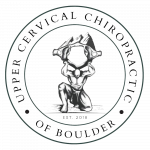What Is Tourette’s Syndrome?
Tourette’s Syndrome is a neurological disorder characterized by involuntary movements and/or vocalizations. At the time of this writing, experts are not yet sure what causes Tourette’s, and there is no known cure.
Thankfully, Tourette’s is not life-threatening, however, it can be difficult living with this condition. Doctors can help some patients control this syndrome with various medications, but modern research has revealed that upper cervical spine treatment may benefit those with Tourette’s.
Signs and Symptoms of Tourette’s Syndrome
Tourette’s will present differently depending upon the patient. Not everyone gets the same symptoms. The onset of the condition usually begins in children between the ages of five and 10, though it may begin in some children as young as three and for others as old as 18.
People with Tourette’s experience involuntary tics. Sometimes these tics are vocal—grunting, stuttering, throat-clearing, yelping, or repeating words and phrases. Yelling swear words or profanity is a common occurrence over which the person with Tourette’s Syndrome has no control.
Alternatively, tics may be motor-based. These types of tics may include blinking, grimacing, stomping the feet, shrugging the shoulders, or jerking the head. Head jerking can be a concern due to the potential for injuries. Occasionally, some people with Tourette’s may bang their heads, which is also concerning but rare.
How the Upper Cervical Spine Affects Tourette’s Syndrome
The brain and spinal cord make up the Central Nervous System (CNS). The CNS controls all of the body’s movements by transmitting signals through the nerves to all parts of the body.
When nerve signals are impeded, it can disrupt the signal or cause nerves to misfire. This can cause or exacerbate tics, as well as other conditions.
The upper cervical spine is the uppermost seven vertebrae that run through the neck. Because of this location, they are prone to injury and can slip out of alignment. When misaligned, it may cause inflammation and swelling that compresses the nerves, or the nerves may be pinched between the vertebrae. New research shows that upper cervical care can help decrease the frequency and severity of symptoms of Tourette’s Syndrome.
How Our Tourette’s Syndrome Treatment Works
At Upper Cervical Chiropractic of Boulder, our doctors offer safe, natural, non-invasive, drug-free treatments that can help those with Tourette’s Syndrome. Dr. Christina Coblish and Dr. Ryan Moeskau are upper cervical specialists who practice the Blair Chiropractic Technique.
The Blair Chiropractic Technique is an advanced method in upper cervical care that uses state-of-the-art technology. Cone-Beam Computed Tomography (CBTC) scans are revolutionizing the industry, allowing doctors to have a 3D imaging scan that helps them detect and calculate the spine’s angles.
Once Dr. Coblish and Dr. Moeskau complete a thorough health screening and scan, they are better able to make corrections with precision using lower-force manipulations than traditional chiropractors. Blair chiropractic care is gentler on patients and holds longer, requiring fewer visits.
If you have Tourette’s, consider adding upper cervical care to your healthcare routine. Contact us for more information. Our areas of coverage include Boulder, Longmont, Louisville, Erie, Lafayette, Broomfield, and Denver in Colorado.


